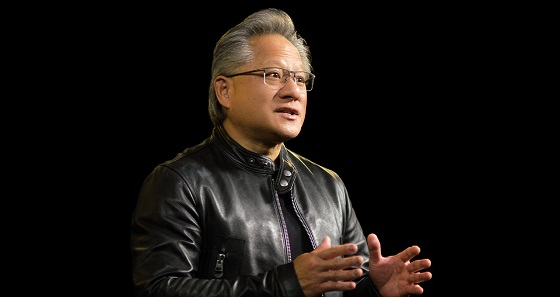In his keynote at CES 2025, NVIDIA CEO Jensen Huang unveiled a series of advancements in artificial intelligence (AI) and robotics. His address laid out NVIDIA’s vision for a future where computing transcends traditional boundaries, powered by innovations that bridge virtual intelligence and the physical world.
Huang began by reflecting on NVIDIA’s transformative journey over the past three decades, from the company’s first programmable GPUs to its current role at the forefront of AI-powered advancements. He explained how AI has evolved from perception-based models, capable of understanding images, words, and sounds, to generative AI systems that can create text, visuals, and audio. Now, AI is entering what Huang called the era of agentic AI, where systems can reason, plan, and act autonomously. He described the next frontier, physical AI, as the integration of virtual intelligence with real-world interaction, enabling robots to engage with physical spaces through reasoning and action.
Central to this vision is NVIDIA’s push to advance general-purpose robotics. Huang introduced NVIDIA Isaac Groot, a new platform designed to accelerate the development of humanoid robots by harnessing synthetic data generated in virtual simulations. The platform allows developers to capture human demonstrations through teleoperation, amplify this data using NVIDIA Omniverse, and train robots to perform tasks in real-world scenarios. This approach, Huang explained, dramatically reduces the time and cost of developing advanced robotic systems.
At the heart of these advancements is NVIDIA Cosmos, the world’s first AI foundation model built to understand and simulate the physical world. Huang highlighted Cosmos’s ability to grasp physical dynamics such as gravity, friction, and object permanence, enabling it to generate realistic simulations that help train robotics and autonomous systems. Openly licensed, Cosmos is positioned to catalyze collaboration and innovation across industries, providing a platform for developers to generate synthetic data and refine AI models at unprecedented scales.
In his keynote, Huang also unveiled the RTX Blackwell GPU family, a leap forward in graphics processing tailored for AI and robotics workloads. These GPUs, featuring 92 billion transistors and AI performance of 4 petaflops, redefine what is possible in graphics rendering and computational efficiency. Huang emphasized how Blackwell’s neural rendering capabilities leverage AI to predict and generate pixels, achieving breathtaking visuals and enabling new levels of energy efficiency.
The advancements extend beyond the lab, as NVIDIA continues to revolutionize industries with practical applications of its technologies. Huang described the transformative potential of autonomous vehicles, made possible by NVIDIA’s “three-computer” solution: DGX systems for AI training, Omniverse for simulation and testing, and AGX computers for in-vehicle processing. Major automotive manufacturers, including Toyota and Mercedes-Benz, are collaborating with NVIDIA to develop next-generation autonomous vehicles, signaling the dawn of a multi-trillion-dollar robotics industry.
Huang also highlighted the potential of humanoid robots to reshape industries and societies. While traditional robots often require environments adapted to their limitations, humanoid robots can operate seamlessly in human-designed spaces. He emphasized the importance of training these robots using massive datasets, generated synthetically through NVIDIA’s platforms, to enable them to perform complex tasks with precision and adaptability.
In a move to democratize AI, Huang announced that NVIDIA’s AI stack will soon be accessible on consumer PCs through a partnership with Microsoft’s WSL2 platform. This initiative will allow millions of users to deploy advanced AI models directly on their devices, enabling new possibilities for creativity, productivity, and innovation.
Huang concluded by emphasizing the broader implications of NVIDIA’s work. He framed AI and robotics as technologies that will revolutionize every industry, reshaping how we live, work, and create. As he described the convergence of physical and virtual intelligence, Huang left the audience with a sense of awe at the possibilities that lie ahead. With advancements in physical AI, robotics, and GPUs, NVIDIA is driving a bold transformation that merges the digital and physical worlds into a seamless and intelligent future.

